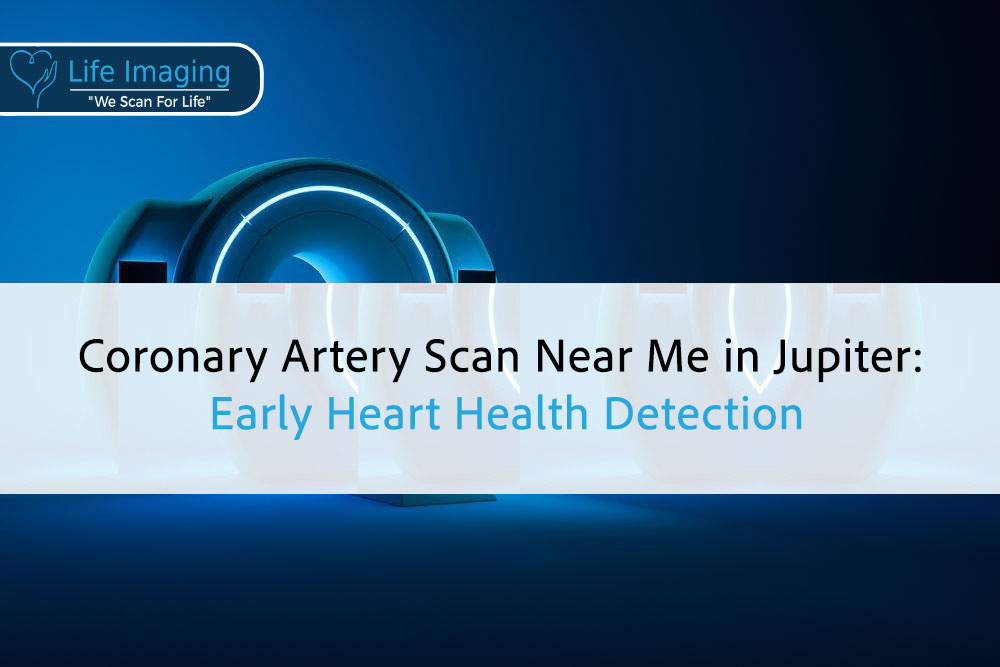
Coronary Artery Scan Near Me in Jupiter: Early Heart Health Detection
Introduction Your heart works hard every second of the day,
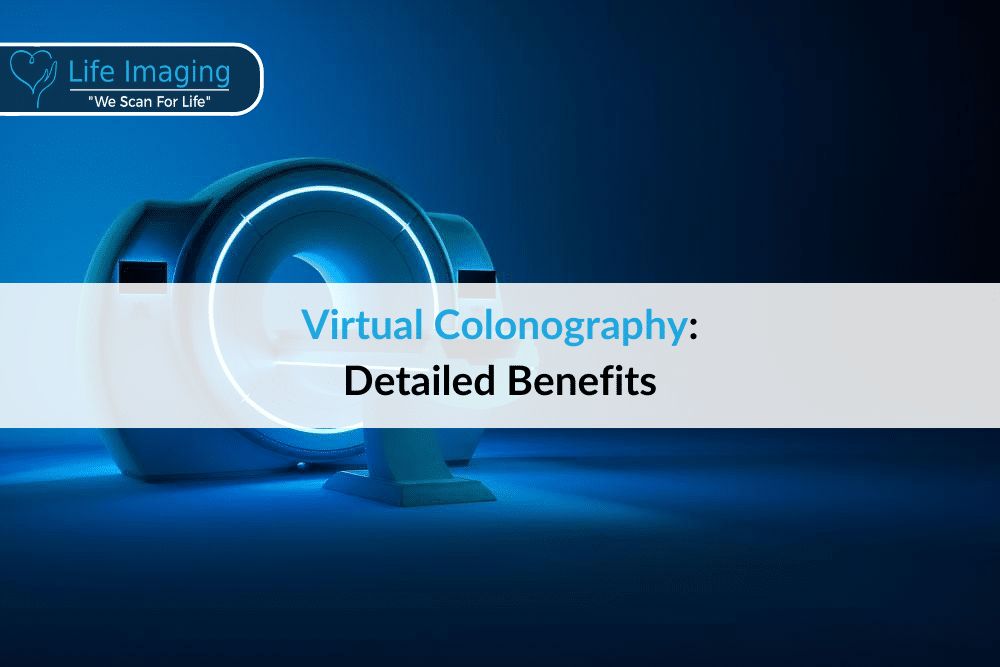
Life Imaging Fla, located in Deerfield, is dedicated to the early detection of heart disease and cancer, utilizing cutting-edge imaging technologies. Among the services offered, virtual colonography stands out as a non-invasive and highly effective method for detecting colon cancer and other abnormalities within the colon. This advanced screening technique has revolutionized the way colon examinations are conducted, providing detailed insights that are crucial for early diagnosis and treatment.
Virtual colonography, also known as CT colonography, uses computed tomography (CT) scans to produce three-dimensional images of the colon. This method is less invasive than traditional colonoscopies, eliminating the need for sedation and significantly reducing discomfort. Patients can expect a quicker, more comfortable experience without compromising the accuracy of the results.
The benefits of virtual colonography are numerous. It not only enhances patient comfort and convenience but also increases the likelihood of detecting polyps and other abnormalities at an earlier stage. Early detection is vital for successful treatment and improved outcomes, making this technology an invaluable tool in the fight against colon cancer.
This article will delve into the detailed benefits of virtual colonography, exploring how it works, comparing it to traditional methods, and highlighting its advantages. Whether you’re considering your screening options or seeking to understand more about this innovative technique, you will find comprehensive and informative details about virtual colonography and its role in promoting colorectal health at Life Imaging Fla in Deerfield.
Virtual colonography is a modern imaging technique that examines the colon and rectum. It uses CT scanning to create detailed, three-dimensional images of the colon. Unlike traditional colonoscopy, virtual colonography is less invasive and does not require sedation. This method can help detect polyps, which are small growths in the colon that can develop into cancer if left untreated.
The process involves inflating the colon with air or carbon dioxide to get clear images. As the patient lies on the scanning table, the CT scanner captures detailed pictures of the colon from different angles. These images are then combined to create a comprehensive view, allowing doctors to spot abnormalities effectively.
Virtual colonography begins with the patient preparing the colon. This usually involves a special diet and a bowel-cleansing solution the day before the scan. When the patient arrives for the scan, they will be asked to change into a gown. A small tube is then inserted into the rectum to inflate the colon with air or carbon dioxide.
The patient will lie on the CT scanning table, and the table will move through the scanner. The machine takes multiple X-ray images of the colon from various angles. These images are processed to create detailed, three-dimensional renderings of the colon.
The procedure usually takes about 15 to 20 minutes and does not involve any discomfort from sedation or surgical instruments. After the scan, the images are reviewed by a radiologist who looks for any signs of polyps or other abnormalities.
Virtual colonography offers several benefits that make it appealing for patients:
– Non-Invasive: Unlike traditional colonoscopy, this method does not use a scope. There is no need for sedation, making the procedure safer and reducing recovery time.
– Quick and Convenient: The entire scan takes about 15 to 20 minutes. Patients can usually return to their normal activities immediately after the procedure.
– Detailed Images: CT scanners provide high-resolution, three-dimensional images. These can reveal polyps and other abnormalities that might be missed by a traditional colonoscopy.
– Early Detection: Detecting polyps at an early stage is crucial for preventing colon cancer. By spotting these early, doctors can remove them before they develop into cancer.
– Accessibility: Since it does not require sedation, more patients, including those who may have contraindications to sedation, can undergo this procedure.
– Painless: The method eliminates the discomfort associated with the insertion of a colonoscope.
These benefits highlight why virtual colonography is an excellent option for colorectal screening, particularly for individuals seeking a less invasive alternative to traditional methods.
Traditional colonoscopy and virtual colonography both aim to detect and prevent colon cancer, but they differ in many ways. Understanding these differences helps in making an informed decision about which method to choose.
Traditional colonoscopy involves inserting a long, flexible tube with a camera into the rectum to visually inspect the entire colon. This procedure requires sedation, and patients may experience discomfort and a longer recovery period. Additionally, if polyps are found, they can be removed during the same procedure.
Virtual colonography, on the other hand, uses CT imaging to visualize the colon. It is non-invasive, quicker, and does not require sedation. However, if polyps or other abnormalities are detected, a traditional colonoscopy may still be needed to remove them.
When considering which procedure to choose, factors like personal comfort, medical history, and the ability to tolerate sedation play a role. Both methods are effective, but virtual colonography offers a less invasive alternative that may be more appealing to many patients.
Preparing for a virtual colonography is a crucial step to ensure accurate results. Patients need to follow specific guidelines to clean out the colon before the procedure.
– Dietary Restrictions: Patients may need to follow a clear liquid diet for 24 hours before the scan. This includes water, broth, and certain juices.
– Bowel Cleanse: A bowel-cleansing solution is taken to empty the colon. This usually involves drinking a special liquid that helps flush out the bowel contents.
– Medication Instructions: Patients should inform their doctor about any medications they are taking. Certain medications may need to be adjusted before the scan.
Following these preparation steps is essential. A clean colon ensures clear and detailed images, which are vital for accurate analysis and diagnosis.
Virtual colonography is suitable for many individuals, particularly those seeking a non-invasive screening method. Here are some ideal candidates:
– Those at Average Risk: Individuals over 50 years old who have an average risk for colon cancer can benefit from this screening.
– People with Previous Incomplete Colonoscopies: If a traditional colonoscopy could not be completed due to technical challenges, virtual colonography is a good alternative.
– Patients Unable to Tolerate Sedation: For those who cannot undergo sedation due to medical reasons, this method offers a safer option.
– Individuals Seeking Convenience: Those looking for a quicker and more convenient procedure without the discomfort of traditional methods.
While virtual colonography is beneficial for many, it may not be suitable for everyone. People with certain medical conditions or those who have had previous bowel surgeries should consult with their doctor to determine the best screening method for them.
While virtual colonography offers many advantages, it also has some limitations that should be considered:
– Follow-up Procedures: If polyps or abnormalities are detected, a traditional colonoscopy may still be required to remove them.
– Radiation Exposure: Although the radiation dose is low, patients are still exposed to some radiation during the CT scan.
– Less Effective for Smaller Polyps: This method may be less effective at detecting very small polyps compared to traditional colonoscopy.
– Insurance Coverage: Not all insurance plans may cover virtual colonography, so it’s important to check with your provider.
Understanding these limitations helps you make an informed decision about whether virtual colonography is the right choice for you.
Advancements in technology continue to enhance the effectiveness of virtual colonography. Modern CT scanners provide even higher-resolution images with lower doses of radiation. Techniques like computer-aided detection (CAD) software are being developed to assist radiologists in identifying polyps more accurately.
Research is ongoing to improve preparation methods, making them more comfortable and less burdensome for patients. Enhanced imaging protocols are being explored to further reduce the necessity for follow-up procedures, aiming for a more comprehensive and standalone screening tool.
These advancements show promise in making virtual colonography an even more reliable and preferred method for colon cancer screening in the future.
Early detection of colon cancer is crucial for successful treatment and better outcomes. Unlike many diseases, colon cancer often develops slowly, starting as benign polyps that can take years to turn cancerous. Detecting these polyps early allows for their removal before they develop into cancer.
Screening through methods like virtual colonography enables early detection, which significantly reduces the mortality rate associated with colon cancer. Regular screenings are recommended, especially for those over the age of 50 or those with a family history of colon cancer.
By prioritizing early detection, individuals can take proactive steps in maintaining their health and preventing the progression of colon cancer.
Life Imaging Fla plays a crucial role in providing virtual colonography services in Deerfield. With advanced imaging technology and a commitment to early detection, this center helps patients access crucial screenings for colon cancer and other conditions.
The skilled team at Life Imaging Fla ensures that patients receive accurate and timely results from their screenings. Their state-of-the-art facility offers a comfortable and supportive environment for undergoing virtual colonography and other imaging services.
By choosing Life Imaging Fla, patients in Deerfield can benefit from cutting-edge technology and a comprehensive approach to early detection and preventive care.
Education is key to increasing awareness and encouraging more people to undergo regular screenings. Life Imaging Fla actively participates in community outreach initiatives to inform residents of Deerfield about the benefits of virtual colonography.
Workshops, seminars, and informational pamphlets are some of the ways that Life Imaging Fla engages with the community. These efforts help to break down any misconceptions and promote the importance of early detection in preventing colon cancer.
By fostering a well-informed community, Life Imaging Fla aims to improve overall public health and encourage proactive health screenings among Deerfield residents.
Understanding what happens during a virtual colonography procedure can help patients feel more relaxed. When you arrive for the scan, you’ll be asked to change into a hospital gown. The staff will explain each step and answer any questions you may have.
First, a small tube is inserted into the rectum. This tube helps inflate the colon with air or carbon dioxide, making it easier to capture detailed images. You may feel a bit of pressure or discomfort, but it should not be painful.
Next, you will lie down on the CT scanning table. The table will slowly move through the scanner, which takes multiple X-ray images of your colon. You might be asked to change positions a couple of times to get complete images. The entire process typically takes 15-20 minutes. Once done, the tube is removed, and you can go about your day without any restrictions.
After your virtual colonography, a radiologist will review the images. This specialist is trained to identify any abnormalities, such as polyps or other changes in your colon. Typically, you will receive your results within a few days.
If the radiologist finds polyps or other suspicious areas, you may need a traditional colonoscopy for further examination or removal. If the scan shows no issues, you may not need another screening for several years, depending on your doctor’s recommendations.
It is essential to discuss your results in detail with your healthcare provider. They can help you understand what the findings mean and advise you on the next steps for maintaining your colon health.
The cost of virtual colonography can vary depending on several factors, including your location and the specific medical facility. It’s important to note that not all insurance plans may cover this procedure. Therefore, it’s a good idea to check with your insurance provider before scheduling the scan to understand your coverage options and any potential out-of-pocket expenses.
Some medical facilities offer payment plans or financial assistance programs for those who may need help covering the costs. Knowing your options ahead of time can help you make an informed decision without any unexpected financial surprises.
Safety is a primary concern for any medical procedure. Both virtual colonography and traditional colonoscopy are generally safe, but they come with different risks and benefits.
Virtual colonography is non-invasive and has fewer risks compared to traditional colonoscopy. There’s no need for sedation, which eliminates the risks associated with anesthesia. Additionally, the procedure poses a very low risk of complications like colon perforation.
Traditional colonoscopy, while highly effective, involves inserting a long, flexible tube into the colon, which carries a slight risk of bleeding or perforation. Sedation is required, which could pose risks for patients with certain health conditions.
Choosing between the two methods depends on various factors, including medical history, personal preferences, and risk tolerance. Consulting with healthcare professionals can provide valuable insights to help make the best choice for individual needs.
Many people have concerns or misconceptions about virtual colonography, which may prevent them from considering this valuable screening tool. Addressing these can help more individuals make informed decisions.
– Radiation Exposure: Some worry about the radiation exposure from the CT scan. While any exposure to radiation should be minimized, the dose from a virtual colonography is relatively low and considered safe for most people.
– Discomfort: While the idea of inflating the colon with air might sound uncomfortable, most patients report minimal discomfort, and the procedure is over quickly.
– Accuracy: Some believe that virtual colonography is less accurate than traditional methods. While it may not detect very small polyps, it’s highly effective at identifying larger polyps and abnormalities.
– Cost and Coverage: Concerns about cost and insurance coverage are common. Checking with your provider ahead of time can clarify these issues.
By addressing these concerns, more people might feel comfortable opting for virtual colonography, benefiting from its advanced, non-invasive screening capabilities.
After undergoing a virtual colonography, follow-up care is crucial for continuing to monitor your colon health. If the results show any abnormalities, your healthcare provider will discuss the next steps, which might include a traditional colonoscopy for further investigation or removal of polyps.
Even if the results are normal, it’s important to adhere to a screening schedule as recommended by your doctor. Regular screenings are essential for early detection and prevention of colon cancer.
Maintaining open communication with your healthcare provider ensures that any concerns or symptoms can be addressed promptly, contributing to better long-term health outcomes.
Maintaining a healthy lifestyle plays a significant role in colon health. Dietary choices, physical activity, and avoiding harmful habits can all contribute to reducing your risk of colon cancer and other digestive issues.
– Diet: Consuming a diet rich in fiber, fruits, vegetables, and whole grains promotes a healthy colon. Limiting red meat, processed foods, and alcohol can reduce cancer risk.
– Exercise: Regular physical activity helps maintain a healthy weight and supports overall digestive health. Aim for at least 30 minutes of moderate exercise most days of the week.
– Avoiding Tobacco: Smoking has been linked to an increased risk of colon cancer. Quitting smoking can improve your overall health and reduce cancer risk.
Adopting these healthy habits can complement the benefits of regular screenings like virtual colonography, contributing to a healthier colon and overall well-being.
Ongoing research continues to improve virtual colonography, making it an even more effective tool for colon cancer screening. Advances in imaging technology and computer-aided detection software are pushing the boundaries of what’s possible, enhancing accuracy and reducing the need for follow-up procedures.
Future developments might also focus on making the preparation process easier and more convenient for patients. Efforts to lower the radiation dose without compromising image quality are also a priority, aiming to make virtual colonography as safe as possible.
These advancements promise to make virtual colonography an increasingly vital tool in the early detection and prevention of colon cancer, offering hope for better health outcomes for more people.
Regular screenings are a cornerstone of preventive healthcare, particularly for detecting colon cancer. Experts recommend that individuals start getting screened at age 50, although those with a family history of the disease might need to start earlier.
Screenings like virtual colonography allow for the early detection of polyps and other abnormalities before they progress to cancer. By catching these early, treatment can be more effective, significantly improving survival rates.
Making regular screenings a priority is essential for everyone, especially as we age. It’s a simple but powerful step towards maintaining health and preventing serious diseases.
Deerfield offers various community resources to support individuals undergoing virtual colonography and other health screenings. Local health organizations often provide educational materials, support groups, and workshops to help residents better understand their health and screening options.
Accessing these resources can offer valuable support, whether you’re preparing for a procedure or navigating the follow-up process. Engaging with the community can help alleviate anxiety and provide encouragement to stay proactive about health screenings.
By taking advantage of local resources, individuals can feel more empowered and informed, contributing to better health outcomes for themselves and their loved ones.
Before undergoing a virtual colonography, a pre-screening consultation is essential. During this meeting, healthcare professionals will explain the procedure in detail. They will discuss the preparation steps, what to expect during the scan, and how to interpret the results. This is also an excellent opportunity to ask any questions and address any concerns you might have.
The consultation will cover your medical history, including any medications you are taking. This helps the healthcare team tailor the preparation process to your needs. They will also provide instructions on how to prepare your bowel for the scan, ensuring that the colon is clear so that accurate images can be obtained. Clear communication during this stage sets the foundation for a successful and stress-free screening experience.
Technological advances have significantly improved the capabilities of virtual colonography. Modern CT scanners produce high-resolution images, allowing for a more accurate and detailed examination of the colon. These advancements help in detecting even the smallest polyps and abnormalities, which are crucial for early diagnosis.
Computer-aided detection (CAD) software is another innovation enhancing the effectiveness of virtual colonography. CAD uses algorithms to assist radiologists in identifying potential issues in the CT images. This technology acts as a second set of eyes, reducing the chances of missing any abnormalities. By integrating these advanced tools, virtual colonography offers a highly reliable method for colorectal screening.
Healthcare providers play a crucial role in the virtual colonography process. From the initial consultation to the final results, a team of professionals ensures that the procedure runs smoothly and effectively. Radiologists, technicians, and nurses work together to provide comprehensive care.
During the scan, technicians operate the CT scanner and guide you through the process. Radiologists then analyze the images, identifying any abnormalities. They collaborate with your primary care physician to interpret the results and discuss any necessary follow-up actions. This team-based approach ensures that you receive the best possible care and accurate results.
Many patients who have undergone virtual colonography report positive experiences. The non-invasive nature of the procedure, combined with its quick and painless process, contributes to its popularity. Testimonials often highlight how the procedure was straightforward and much less daunting than they initially anticipated.
For many, the convenience of not needing sedation and the ability to resume normal activities immediately after the scan are significant benefits. Patients appreciate the detailed explanations provided by the healthcare team, which helps alleviate anxiety and creates a trusting environment. These positive experiences underscore the advantages of virtual colonography and encourage others to consider this screening method.
Virtual colonography has a positive impact on community health by offering an accessible and effective screening method for colon cancer. Increasing awareness and understanding of this procedure can encourage more people to undergo regular screenings. Early detection through virtual colonography contributes to better health outcomes and reduces the burden of colon cancer on the healthcare system.
Community health programs that include virtual colonography increase screening rates, leading to earlier diagnoses and treatment. This proactive approach helps reduce the incidence of advanced-stage colon cancer, ultimately saving lives. By promoting virtual colonography, communities can foster a culture of preventive healthcare and enhance overall well-being.
In addition to virtual colonography, Life Imaging Fla offers a range of advanced imaging services that contribute to early detection and prevention of various health conditions. These services include heart scans, which are particularly valuable for assessing cardiovascular health.
Heart scans, also known as coronary calcium scans or cardiac CT scans, measure the amount of calcium in the walls of the coronary arteries. High calcium scores can indicate the presence of plaque, which can lead to heart disease. This non-invasive test provides valuable information about the risk of heart disease, allowing for early intervention and management.
Heart scans are essential for early detection of heart disease, particularly in individuals with risk factors such as high blood pressure, high cholesterol, smoking, diabetes, and a family history of heart disease. By detecting calcium buildup in the coronary arteries, heart scans help identify individuals at risk for heart attacks and other heart-related issues before symptoms appear.
The information obtained from a heart scan can guide treatment plans, including lifestyle changes and medications, to manage and reduce the risk of heart disease. Early detection through heart scans enables proactive measures that can significantly improve long-term cardiovascular health and prevent serious complications.
Heart scans are quick, non-invasive procedures that use computed tomography (CT) technology to capture detailed images of the heart. During the scan, you will lie on a table that moves through the CT scanner. The scanner takes multiple X-ray images of your heart from different angles.
These images are combined to create a detailed view of your coronary arteries, allowing doctors to measure the amount of calcium present. The calcium score helps determine the level of plaque buildup and the risk of heart disease. The entire process usually takes about 10-15 minutes, and you can return to your normal activities immediately after the scan.
Heart scans offer several benefits for individuals concerned about their cardiovascular health:
– Early Detection: Identifies calcium buildup before symptoms occur, enabling early intervention.
– Non-Invasive: No need for needles, incisions, or sedation, making the procedure comfortable and low-risk.
– Quick and Convenient: The scan takes only a few minutes, with immediate return to daily activities.
– Guidance for Treatment: Helps doctors personalize treatment plans based on the calcium score.
– Peace of Mind: Provides valuable information about heart health, reducing anxiety and uncertainty.
These benefits make heart scans a valuable tool for monitoring and managing cardiovascular health, especially for individuals with risk factors.
Preparing for a heart scan is straightforward. On the day of the scan, you may be asked to avoid caffeine and smoking, as these can affect the heart rate. You should also wear comfortable clothing and avoid wearing metal objects, such as jewelry, which can interfere with the scan.
During the procedure, you will be asked to lie still and hold your breath for a few seconds while the images are taken. The technician will guide you through each step to ensure a smooth and efficient process. Following these simple preparation steps helps obtain the most accurate results from your heart scan.
After your heart scans, the results are typically reviewed by a radiologist and shared with your primary care physician or cardiologist. The calcium score will be explained in detail, indicating the level of plaque buildup and the associated risk of heart disease.
If the scan reveals a high calcium score, your doctor may recommend further tests or treatments, such as lifestyle changes, medications, or additional imaging studies. Even if the calcium score is low, it’s important to continue monitoring your heart health and follow your doctor’s recommendations for regular check-ups and preventive measures.
By staying proactive and informed about your cardiovascular health, you can take steps to reduce the risk of heart disease and maintain a healthy heart.
As we have explored, virtual colonography and heart scans are invaluable tools for early detection and preventive healthcare. These advanced imaging techniques allow for a comprehensive understanding of your colon and heart health, offering peace of mind and actionable insights. By proactively choosing these screenings, you empower yourself with knowledge that can lead to timely interventions and better health outcomes.
Regular screenings are an essential part of maintaining good health, especially for individuals with risk factors or a family history of colon cancer and heart disease. The convenience and non-invasive nature of these procedures make them accessible and easy to incorporate into your routine healthcare practices.
At Life Imaging Fla, we are committed to providing top-quality imaging services to the Deerfield community. Our state-of-the-art facilities and experienced healthcare professionals ensure that you receive accurate and reliable results in a comfortable and supportive environment. Whether you are considering a virtual colonography to screen for colon health or a heart scan to assess cardiovascular risk, our team is here to guide you every step of the way.
Don’t wait until symptoms appear to take control of your health. Schedule your virtual colonography or heart scan today with Life Imaging Fla. Early detection can be life-saving, and taking this proactive step can help ensure a healthier future. Visit our website or contact us to book your appointment and learn more about how we can support your health journey. Take charge of your well-being and make preventive health screenings a priority.

Introduction Your heart works hard every second of the day,
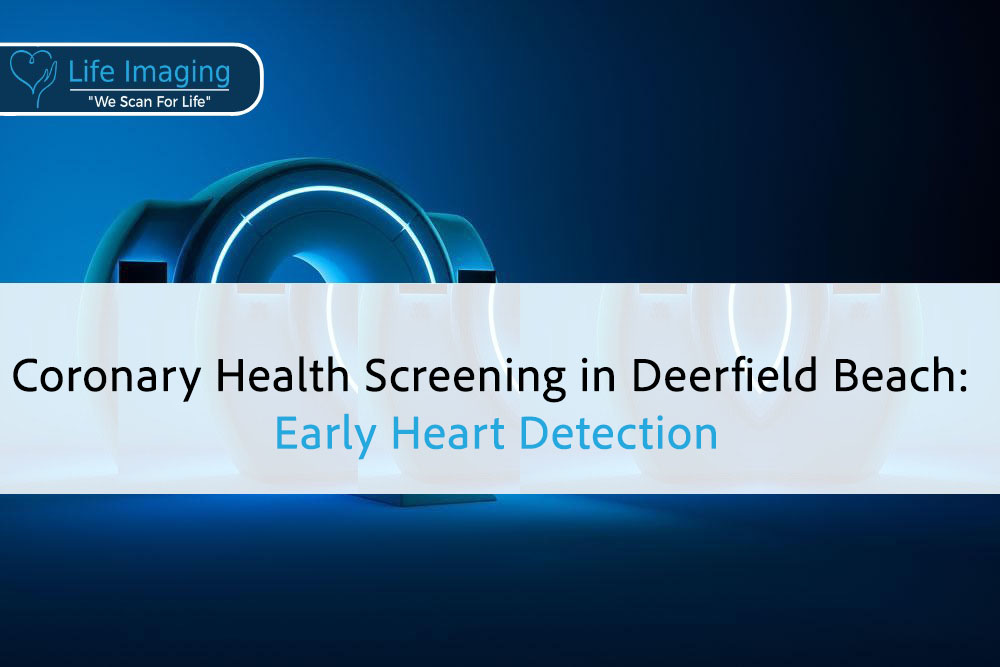
Introduction Your heart works around the clock, but changes inside
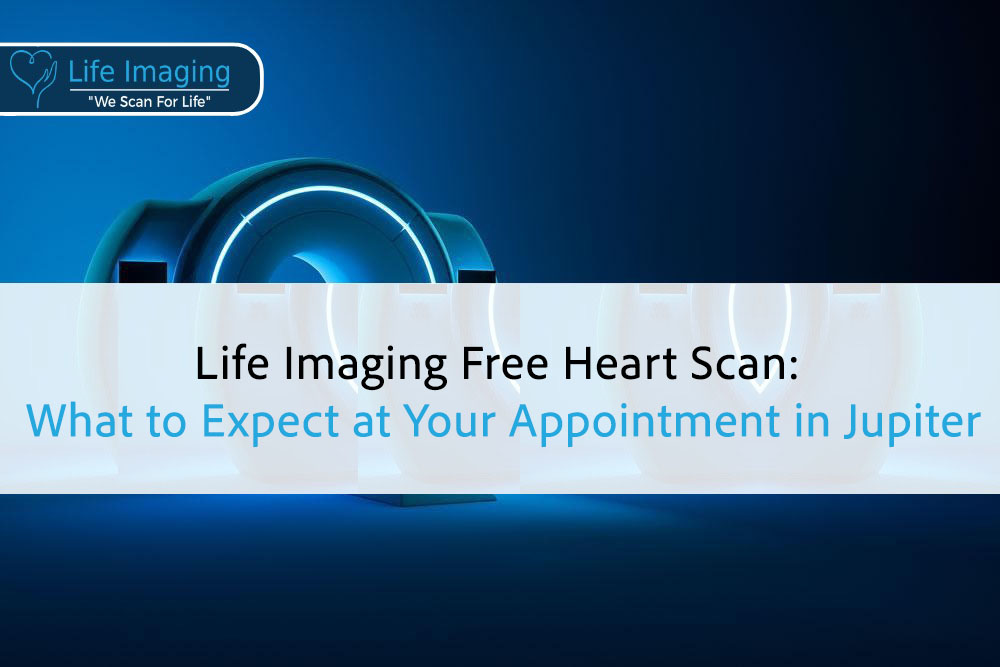
Introduction Your heart works nonstop, often without a single complaint.
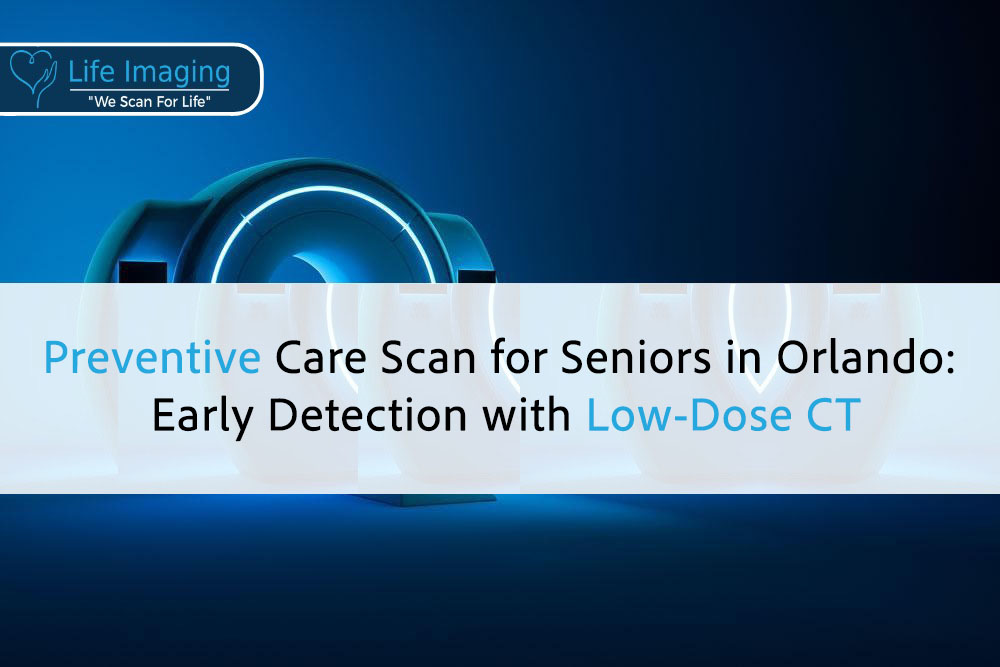
Introduction The best part of getting older is having time
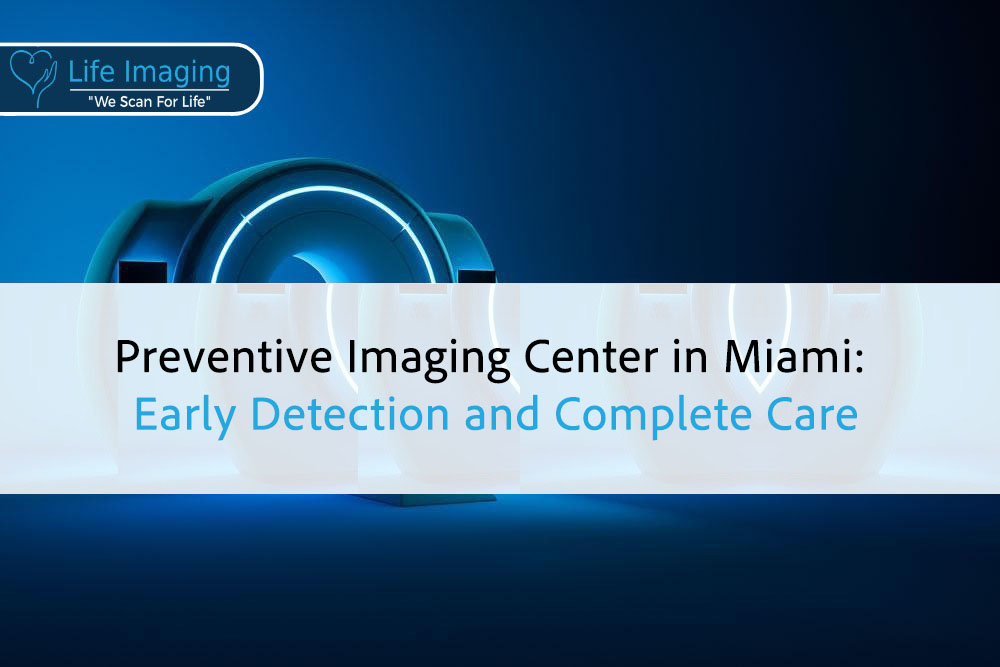
Introduction Good health isn’t just about treating problems, it’s about
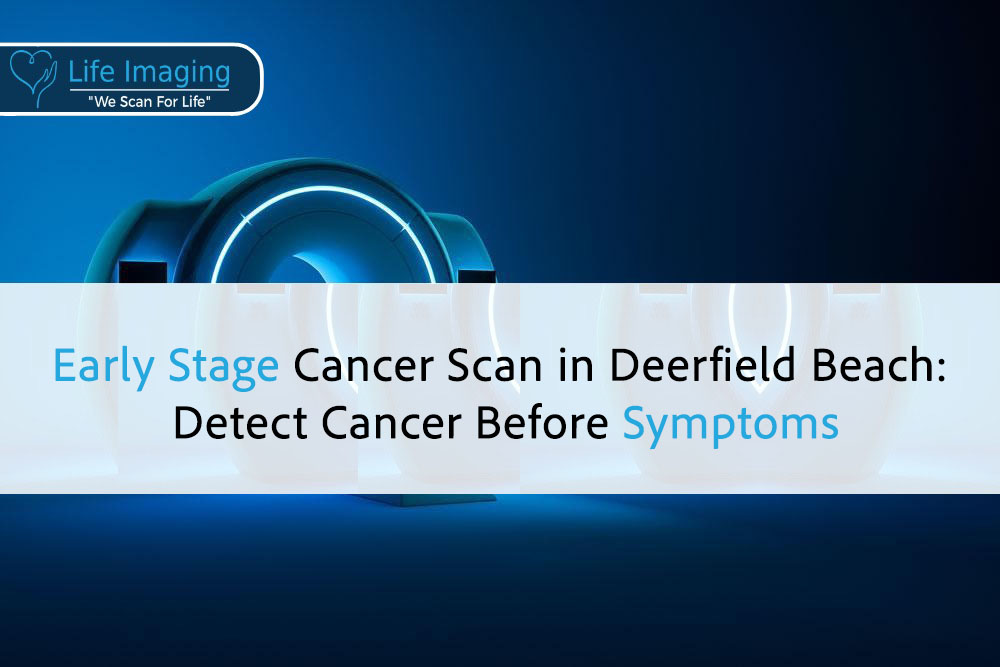
Introduction Cancer often begins quietly, long before you feel anything

* Get your free heart scan by confirming a few minimum requirements.
Our team will verify that you qualify before your scan is booked.
Copyright © 2025 Life Imaging – All Rights Reserved